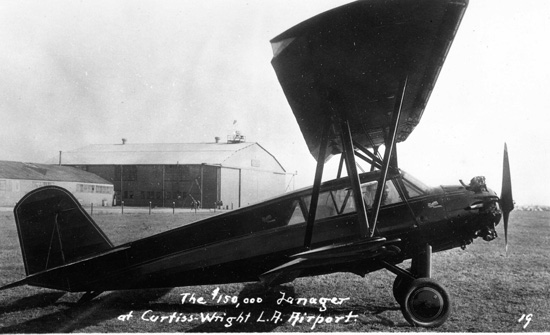Curtiss Tanager on:
[Wikipedia]
[Google]
[Amazon]
The Curtiss Model 54 Tanager was an aircraft constructed in 1929 as Curtiss' entry in the Guggenheim Safe Aircraft Competition.
 Only the Tanager and the
Only the Tanager and the ''Flight'' 29 August 1930
/ref>
* ttps://books.google.com/books?id=jOIDAAAAMBAJ&pg=PA534 "Wings For All Of Us", October 1930, Popular Mechanicsdetailed illustration Tanager's safety low speed and short take off and landing ability
"Hundred-Thousand Dollar Plane - Why it Won" ''Popular Mechanics'', March 1930
detailed text article and excellent photo of Tanager
The Curtiss Tanager – AOPA Pilot
{{Curtiss aircraft 1920s United States experimental aircraft
Design and development
The Model 54 was a conventional biplane design with a highly streamlined fuselage similar in outline to theCurtiss Eagle
The Curtiss Eagle (retroactively designated the Model 19 by Curtiss some years later) was an airliner produced in small numbers in the United States shortly after World War I. The aircraft was a conventional biplane with three-bay, unstaggered wi ...
, but of considerably smaller proportions. The wings were fitted with a variety of high-lift devices, including automatic leading edge slot
A leading-edge slot is a fixed aerodynamic feature of the wing of some aircraft to reduce the stall speed and promote good low-speed handling qualities. A leading-edge slot is a spanwise gap in each wing, allowing air to flow from below the wing ...
s on the upper wing, flaps that extended along the entire span of the upper wing, and "floating" ailerons on the lower wing that, in the absence of pilot input, automatically adjusted themselves parallel to the airflow over the wing. The combination of these devices gave the Tanager a stalling speed of just 31 mph (50 km/h) and allowed it to land in only 90 ft (27 m).
 Only the Tanager and the
Only the Tanager and the Handley Page Gugnunc
The Handley Page H.P.39 is a wooden biplane that was constructed in 1929. The aircraft was intended to compete in a competition proposed by the Daniel Guggenheim Fund for the Promotion of Aeronautics - the Guggenheim Safe Aircraft Competition ...
passed the qualifying round of the competition, and ultimately the Tanager beat its rival by only one point to claim the $100,000 (£20,000) prize, since the Gugnunc failed to achieve a minimum speed below 38 mph. Even before the competition was decided, however, Handley Page was suing Curtiss for the unlicensed use of the leading-edge slot. Curtiss claimed they were using the slots experimentally and would apply for a license for any commercial use. Curtiss counter-sued Handley Page for infringements of six of their patents in the Handley Page machine. They also cited a ruling that the British machine was not permitted to be imported into the US.
Following the competition, the Tanager was destroyed in a fire when sparks from its engine set the grass alight./ref>
Specifications
See also
References
Bibliography
* *External links
* ttps://books.google.com/books?id=jOIDAAAAMBAJ&pg=PA534 "Wings For All Of Us", October 1930, Popular Mechanicsdetailed illustration Tanager's safety low speed and short take off and landing ability
"Hundred-Thousand Dollar Plane - Why it Won" ''Popular Mechanics'', March 1930
detailed text article and excellent photo of Tanager
{{Curtiss aircraft 1920s United States experimental aircraft
Tanager
The tanagers (singular ) comprise the bird family Thraupidae, in the order Passeriformes. The family has a Neotropical distribution and is the second-largest family of birds. It represents about 4% of all avian species and 12% of the Neotropica ...
Single-engined tractor aircraft
Biplanes
Aircraft first flown in 1929